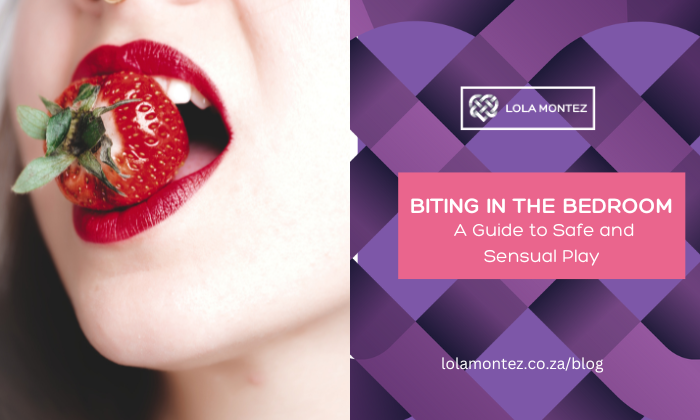Exploring Biting in the Bedroom: A Guide to Safe and Sensual Play
Exploring Biting in the Bedroom: Biting can be an incredibly intense and thrilling addition to your sex life. But like any form of kink, it requires open communication, clear boundaries, and an emphasis on safety.
Understanding the Appeal:
- Power Dynamics: Biting can play into power dynamics, with one partner taking a dominant role while the other submits.
- Primal Urges: For some, biting taps into primal urges and can be incredibly arousing.
- Emotional Release: Biting can be a way to release pent-up emotions, whether it’s anger, frustration, or intense passion.
Safety First:
- Consent is ALWAYS Key:
- Explicit Communication: Discuss your boundaries before any biting occurs. What areas are off-limits? How hard is too hard?
- Check-ins: Regularly communicate during play. Use safe words like “more,” “less,” or “stop” to ensure everyone is comfortable.
- Hygiene: Maintain good oral hygiene.
- Consider Potential Risks:
- Infection: While unlikely, there’s a slight risk of infection.
- Injury: Unintentional injury can happen.
Tips for Sensual Biting:
- Start Slow: Begin with gentle nibbles or kisses.
- Focus on Erogenous Zones: Explore sensitive areas like the neck, shoulders, and inner thighs.
- Vary the Pressure: Experiment with different levels of pressure to find what feels best.
- Incorporate Other Senses: Combine biting with other forms of touch, like licking, sucking, and stroking.
- Create a Safe Space: Choose a comfortable and private environment for play.
Beyond the Physical:
- Emotional Connection: Biting can be a deeply intimate act. Connect with your partner on an emotional level.
- Communication: Open and honest communication is crucial throughout the entire experience.
Important Note:
- Respect Boundaries: Never force anyone to participate in any activity they are uncomfortable with.
- If in doubt, stop: If something doesn’t feel right, stop immediately and reassess.
Biting can be an incredibly rewarding experience when approached with respect, safety, and open communication.
Disclaimer: This is for informational purposes only and does not constitute medical or professional advice.

